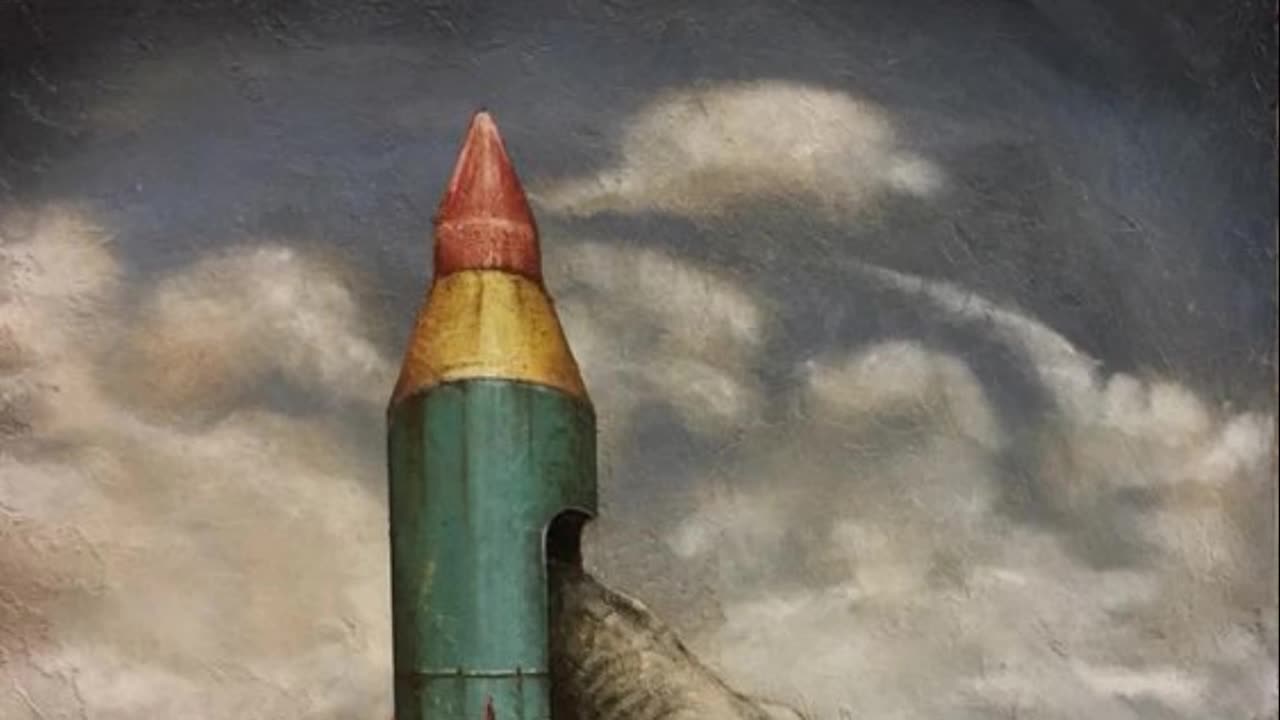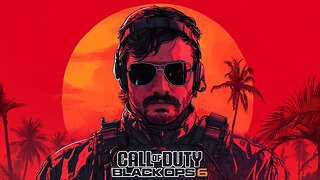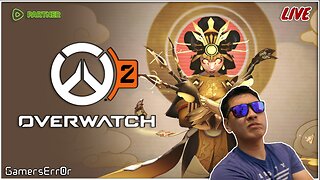Premium Only Content

A Day In The Life Dear Prudence While My Guitar Gently Weeps The Beatles
A Day In The Life Album: Sgt. Pepper's Lonely Hearts Club Band (1967)
Dear Prudence Album: The White Album (1968)
While My Guitar Gently Weeps Album: The White Album (1968)
by The Beatles
A 41-piece orchestra played on A Day In The Life. The musicians were told to attend the session dressed formally. When they got there, they were presented with party novelties (false noses, party hats, gorilla-paw glove) to wear, which made it clear this was not going to be a typical session. The orchestra was conducted by Paul McCartney, who told them to start with the lowest note of their instruments and gradually play to the highest.
A Day In The Life was recorded in three sessions: first the basic track, then the orchestra, then the last note was dubbed in.
The beginning of A Day In The Life was based on two stories John Lennon read in the Daily Mail newspaper: Guinness heir Tara Browne dying when he smashed his lotus into a parked van, and an article in the UK Daily Express in early 1967 which told of how the Blackburn Roads Surveyor had counted 4000 holes in the roads of Blackburn and commented that the volume of material needed to fill them in was enough to fill the Albert Hall. Lennon took some liberties with the Tara Browne story - he changed it so he "Blew his mind out in the car."
Regarding the article about Tara Browne, John Lennon stated: "I didn't copy the accident. Tara didn't blow his mind out. But it was in my mind when I was writing that verse." At the time, Paul didn't realize the reference was to Tara. He thought it was about a "stoned politician." The article regarding the "4000 holes in Blackburn, Lancashire" was taken from the UK Daily Express, January 17, 1967 in a column called "Far And Near."
John's friend Terry Doran was the one who completed John's line, "Now they know how many holes it takes to fill..." Terry told him "fill the Albert Hall, John."
McCartney contributed the line "I'd love to turn you on." This was a drug reference, but the BBC banned it because of another section, which they assumed was about marijuana:
Found my way upstairs and had a smoke
Somebody spoke and I went into a dream
The ban was on A Day In The Life finally lifted when author David Storey picked it as one of his Desert Island Discs.
Speaking with GQ in 2018, Paul McCartney explained A Day In The Life's origin story: "It was a song that John had started. He had the first verse, and this often happened: one of us would have a little bit of an idea and instead of sitting down and sweating it, we'd just bring it to the other one and kind of finish it together, because you could ping-pong - you'd get an idea. So he had the first verse: 'I read the news today oh boy,' and we sat in my music room in London and just started playing around with it, got a second verse, and then we got to what was going to lead into the middle. We kind of looked at each other and knew we were being a little bit edgy where we 'I'd love to turn you on.' We knew that would have an effect.
It worked. And then we put on another section I had: 'Woke up, fell out of bed, dragged a comb across my head.' Then we finished the song up and did a big sort of epic recording of it with a big full orchestra and everything. And then did that crescendo thing in the middle of it with the orchestra, which was an idea I'd had because I'd been talking to people and reading about avant-garde music, tonal stuff and crazy ideas. I came up with this idea. I said to the orchestra, 'You should start, all of you.' And they sat all looking at me puzzled. We've got a real symphony orchestra in London who are used to playing Beethoven, and here's me, this crazy guy out of a group and I'm saying, 'Everyone start on the lowest note your instrument can play and work your way up to the highest at your own pace.' That was too puzzling for them, and orchestras don't like that kind of thing. They like it written down and they like to know exactly what they're supposed to do. So George Martin, the producer, said to the people, 'You should leave this note and this point in the song, and then you should go to this note and this note,' and he left the random thing, so that's why it sounds like a chaotic sort of swirl. That was an idea based on the avant-garde stuff I was into at the time."
The final chord was produced by all four Beatles and George Martin banging on three pianos simultaneously. As the sound diminished, the engineer boosted to faders. The resulting note lasts 42 seconds; the studio air conditioners can be heard toward the end as the faders were pushed to the limit to record it. That's the only part of the song I didn't mess with levels... I did cut just a bit out to fade in the next tune.
The rising orchestra-glissando and the thundering sound are reminiscent of "Entry of the Gods into Valhalla" from Richard Wagner's opera "Das Rheingold," where after the rising glissando, Thor beats with his hammer. George Martin said in his 1979 book All You Need is Ears that the glissando was Lennon's idea. After Lennon's death, Martin seems to have changed his mind. In his 1995 book Summer of Love: The Making of Sgt. Pepper, he states that the rising orchestra-glissando was McCartney's idea.
A Day In The Life being the last song on the album, The Beatles found an interesting way to close it out. After the final note, Lennon had producer George Martin dub in a high pitched tone, which most humans can't hear but drives dogs crazy. This was followed by a loop of incomprehensible studio noise, along with a voice saying something like, "never could see any other way," all spliced together. It was put there so vinyl copies would play this continuously in the run-out groove, sounding like something went horribly wrong with the record. Another good reason to own vinyl.
As for what that voice is really saying, even Martin didn't know. Responding to a query in Melody Maker, he wrote: "Everyone wants to know what The Beatles say at the end of the record, but we just don't know! The boys were fooling about on one of their sessions and the actual words uttered were just meant as nonsense and have no significance whatever. It was left on the master tape just for fun, and no-one, not even The Beatles, can remember what was said that day. Actually, most record players switch the record off before these words are heard, but they are on every record."
In 2004, McCartney did an interview with the Daily Mirror newspaper where he said he was doing cocaine around this time along with marijuana. "I'd been introduced to it, and at first it seemed OK, like anything that's new and stimulating," he said. "When you start working your way through it, you start thinking, 'This is not so cool and idea,' especially when you start getting those terrible comedowns."
The movie reference in the lyrics ("I saw a film today, oh boy. The English Army had just won the war") is to a film John Lennon acted in called How I Won The War.
McCartney's middle section (woke up, got out of bed...) was intended for another song.
The Beatles started this with the working title "In The Life of..."
"A Day In The Life" is a rare Beatles song with a title that is not part of the lyrics. Another one is "Yer Blues."
That's Mal Evans doing the counting during the first transition from John to Paul. He set the alarm clock (heard on the recording) to go off at the end of his 24-bar count. Evans also helped with the composition of a couple of songs on the Sgt. Pepper album. Although he never received composer's credit, the Beatles did pay his estate a lump sum in the 1990s for his contributions. Evans died January 5, 1976 after a misunderstanding with the police.
George Martin (from Q Magazine, July 2007): "John's voice - which he hated - was the kind of thing that would send shivers down your spine. If you hear those opening chords with the guitar and piano, and then his voice comes in, 'I heard the news today, oh boy' It's just so evocative of that time. He always played his songs to me on the guitar and I would sit on a stool as he strummed. The orchestral section was Paul's idea. We put two pieces of songs together that weren't connected in any way. Then we had that 24-bars-of-nothing in between. I had to write a score, but in the climax, I gave each instrument different little waypoints at each bar, so they would know roughly where they should be when they were sliding up. Just so they didn't reach the climax too quickly. With 'A Day In The Life,' I wondered whether we were losing our audience and I was scared. But I stopped being scared when I played it to the head of Capitol Records in America and he was gob smacked. He said, That's fantastic. And of course, it was."
In the original take of A Day In The Life, the 41-piece orchestra was not used. Instead, Lennon had roadie Mal Evans count to 21 in a very trippy manner and set off an alarm clock after the 21 counts. This version is on the second Anthology CD, and is very different than the one on Sgt. Pepper.
David Crosby was at Abbey Road studios when The Beatles were recording this. In an interview with Filter magazine, he said: "I was, as near as I know, the first human being besides them and George Martin and the engineers to hear 'A Day In The Life.' I was high as a kite - so high I was hunting geese with a rake. They sat me down; they had huge speakers like coffins with wheels on that they rolled up on either side of the stool. By the time it got the end of that piano chord, man my brains were on the floor."
The orchestral bit was used in the Yellow Submarine movie. Photos of different geographical areas were shown as The Beatles were apparently traveling in the submarine to try and find Pepperland.
When asked by Rolling Stone magazine what songs of his dad's constantly surprise him, Sean Lennon said: "I've listened so much to that stuff that there are very few surprises. But I do think 'A Day In The Life' is always inspiring."
The American rock band Hawthorne Heights originally named themselves A Day in the Life after this song. In 2003, lead vocalist/rhythm guitarist JT Woodruff changed it to their current name.
On June 18, 2010 John Lennon's handwritten lyric sheet for this song featuring corrections and alternate crossed-out lines was auctioned at New York Sotheby's. It was sold for $1.2 million to an anonymous American buyer.
A Day In The Life was rated the greatest ever Beatles song in a special collector's edition issue by The Beatles: 100 Greatest Songs. The list was compiled to coincide with the 40th anniversary of the Fab Four's final studio album, Let It Be.
There is term for the techniques The Beatles used in arranging the final chords of this song: Deceptive Cadence. Glen Burtnik, who was a member of Styx and was also in a popular Beatles tribute band, told us: "It's an instance where the listener assumes the next chord, or melody note, will go somewhere it doesn't. Even though all the indications lead you to expecting a certain outcome, the writer/arranger intentionally surprises you by going someplace else musically. Not sure it's simple to understand, as you're conditioned to being used to the outcome."
Peter Asher, who worked for The Beatles at Apple Records and produced the biggest hits of James Taylor and Linda Ronstadt, considers A Day In The Life the greatest Beatles song from a production standpoint. "'A Day In The Life' certainly combined Beatle ideas and George Martin ideas very effectively,".
Keith Richards named his second son Tara after Tara Brown, the Guinness heir who smashes his car in Lennon's first verse of A Day In The Life. Richard's son was premature and died soon after birth.
While Mia Farrow inspired such men as Andre Previn, Frank Sinatra and Woody Allen, her sister Prudence left her mark on John Lennon. According to Nancy de Herrera's book, All You Need Is Love, Prudence met The Beatles on a spiritual retreat with their guru, Maharishi Mahesh Yogi, in India, which she attended with Mia. When Prudence, suffering depression, confined herself to her room, Lennon wrote "Dear Prudence" hoping to cheer her up. It did.
According to American flautist Paul Horn, who was also with them in Rishikesh, Prudence was a highly sensitive person, and by jumping straight into deep meditation, against the Maharishi's advice, she had allowed herself to fall into a catatonic state. Horn stated, "She was ashen-white and didn't recognize anybody. She didn't even recognize her own brother who was on the course with her. The only person she showed any slight recognition towards was Maharishi. We were all concerned about her and Maharishi assigned her a full-time nurse."
Prudence Farrow wanted to "Teach God quicker than anyone else," according to John Lennon. She would lock herself in her room trying to meditate for hours and hours. From A Hard Day's Write, by Steve Turner: "At the end of the demo version of Dear Prudence John continues playing guitar and says: 'No one was to know that sooner or later she was to go completely berserk, under the care of Maharishi Mahesh Yogi. All the people around were very worried about the girl because she was going insane. So, we sang to her.'"
Prudence Farrow explained years later that she was just trying to take Transcendental Meditation seriously. She said in Mojo magazine, September 2008: "They were trying to be cheerful, but I wished they'd go away. I don't think they realized what the training was all about."
Ringo had left the group as the White Album sessions got very tense, so Paul McCartney played drums. When Ringo came back a short time later, there were flowers on his drum kit welcoming him back.
According to the singer-songwriter Donovan, who was on the retreat in India with The Beatles, he taught John Lennon a "clawhammer" guitar technique that he used on this track. "He was so fascinated by fingerstyle guitar that he immediately started to write in a different color and was very inspired," Donovan said in an interview. "That's what happens when you learn a new style."
The clawhammer style, is played with the strumming hand formed into a claw, using the backs of the fingernails to strum down on the strings.
John Lennon's handwritten lyrics to Dear Prudence were auctioned off for $19,500 in 1987.
Lennon considered Dear Prudence one of his favorites.
Siouxsie And The Banshees covered Dear Prudence in 1983. Their version went to #3 in the UK and became their biggest hit.
"Dear Prudence" was the second Beatles song that the Banshees had covered from their White Album. Previously, they'd recorded a version of "Helter Skelter" for their 1978 LP The Scream.
"Helter Skelter was very much part of our live show before we recorded it," mused Siouxsie Sioux to TeamRock. "The great thing was that the two Beatles songs we chose – 'Helter Skelter' and 'Dear Prudence' – were not originally singles by The Beatles, so it wasn't necessarily a surefire: 'Oh, they're doing a Beatles song.' And it was also a bit irreverent as well, I suppose. A good test of doing a cover version is when people think that you've written it. Quite a lot of people thought Dear Prudence was an original."
Dear Prudence was in the movie Across the Universe, which was based on The Beatles music. In the movie, Prudence (played by T.V. Carpio) locked herself in a closet after discovering that Sadie and JoJo were together when she thought she loved Sadie. Lucy (Evan Rachel Wood), Jude (Jim Sturges), Sadie (Dana Fuges) and Max (Joe Anderson) sing this to make her feel better. It gets her out of the closet and they end the song at a anti-Vietnam War rally.
Siouxsie and the Banshees' take on the song added to The Beatles' simple original arrangement. "It was kind of an undeveloped song on the White Album," Siouxsie said. "and so there was a lot of scope to put in your own stuff, really. What did I want to bring? Oh, some psychedelic transformation there [laughing]."
"No, I think that actual track's fairly restrained, simple and understated on the White Album," she added. "I was listening to singles like Itchycoo Park by the Small Faces, so I think it was wanting to capture the 60s, and all that kind of phasing. Also, it was where we were at the time."
He wasn't credited on the album's liner notes or anywhere else, but Eric Clapton played lead guitar on "While My Guitar Gently Weeps". He and George Harrison were good friends, but George had to convince him to come to the studio because Clapton was worried the other Beatles wouldn't want him there. Clapton's presence eased the mood in the studio at a tense time for The Beatles - they were at each other's throats during recording of The White Album, but they all relaxed when Clapton showed up.
Harrison often had to fight to get his songs on the albums. John Lennon and Paul McCartney were not interested in While My Guitar Gently Weeps at first, but came around when Harrison brought Clapton to the studio.
According to A Hard Day's Write by Steve Turner, Harrison was reading I Ching, the Chinese book of changes, and decided to write a song about the first words he saw, which were "Gently Weeps." This explains the very zen lyrics like "I look at the floor and I see it needs sweeping."
This was originally recorded as an acoustic ballad with just Harrison on acoustic guitar and Paul McCartney on organ. This version can be found on some bootlegs and on The Beatles Anthology 3.
While My Guitar Gently Weeps was the first song Ringo Starr played on after leaving the band in frustration a few weeks earlier. He returned to find flowers on his drums to welcome him back.
Clapton used a Les Paul guitar on While My Guitar Gently Weeps. Later in his career, he switched to a Fender Stratocaster.
Even though While My Guitar Gently Weeps was not a hit, it is one of the most enduring Beatles songs. It remains popular on classic rock radio.
When George Harrison arranged a trip to India for The Beatles to study Transcendental Meditation, they were joined by their good friend Donovan, a singer-songwriter who had hits with "Sunshine Superman" and "Mellow Yellow." They shared a lot of ideas on this trip, many of which influenced The White Album. In an interview with Donovan, he said that John Lennon wanted to learn the clawhammer guitar style, while Harrison was interested in Donovan's chord structures. The A minor descents Donovan showed him ended up in "While My Guitar Gently Weeps."
After working on While My Guitar Gently Weeps, Eric Clapton became good friends with John Lennon and played with him on some of his solo work. When George Harrison threatened to leave The Beatles in 1969, Lennon was ready to replace him with Clapton.
In his solo career, George Harrison played While My Guitar Gently Weeps more than any other. He toured as a headliner just once, in 1974, and included the song on this setlist. In 1991, he jumped on the Japanese leg of Eric Clapton's tour, and they teamed up to perform the song as an encore for these shows. Harrison and Clapton also played it together in 1971 at the Concert For Bangladesh, which Harrison organized to bring aid to the war-torn region. Clapton was one of the "special guests" at the show and gave it lots of additional star power.
Jeff Healy covered While My Guitar Gently Weeps on his 1990 album Hell To Pay.
In the Las Vegas show, LOVE, While My Guitar Gently Weeps is included. In the show they use the Anthology version with a cello added. George Harrison came up with the idea for LOVE, though he died before the show was ever performed.
Carlos Santana covered While My Guitar Gently Weeps on his 2010 album Guitar Heaven. His version features vocals by India Arie and cello by Yo-Yo Ma. "When I think of that song," Arie told Rolling Stone, "I always had this vision of George Harrison being at home with his wife and his kids, and going in at five o'clock in the morning and playing his guitar to himself. I imagined that and put a sensual energy on it."
-
 8:42
8:42
Psychological operations
20 hours agoTwo Pairs Of Hands Cleaning My Gun Mark Knopfler
17 -
 1:54:08
1:54:08
INFILTRATION85
8 hours agoHi, I'm INFILTRATION
36.7K9 -
 7:51:03
7:51:03
GuardianRUBY
10 hours agoRumble Takeover! The Rumblings are strong
82.1K4 -
 4:28:45
4:28:45
Etheraeon
17 hours agoWorld of Warcraft: Classic | Fresh Level 1 Druid | 500 Follower Goal
56.7K -
 3:17:21
3:17:21
VapinGamers
9 hours ago $3.84 earned🎮🔥Scrollin’ and Trollin’: ESO Adventures Unleashed!
38.8K2 -

a12cat34dog
11 hours agoGETTING AFTERLIFE UNLOCKED :: Call of Duty: Black Ops 6 :: ZOMBIES CAMO GRIND w/Bubba {18+}
32.7K2 -
 8:23:18
8:23:18
NubesALot
13 hours ago $5.44 earnedDark Souls Remastered and party games
32.7K -
 3:03:42
3:03:42
GamersErr0r
1 day ago $2.25 earnedits not what you think
26.5K1 -
 7:15:50
7:15:50
Phyxicx
11 hours agoRocket League with Friends! - 11/22/2024
20.1K1 -
 7:54:29
7:54:29
STARM1X16
11 hours agoFriday Night Fortnite
16.7K